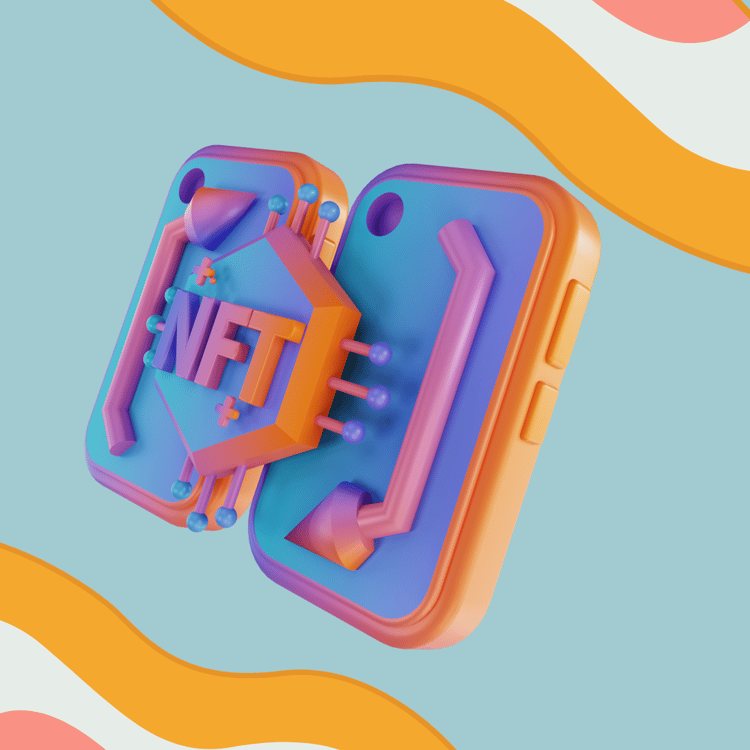
Hey there, digital enthusiasts! If you’ve been keeping up with the latest tech trends, you’ve heard a lot about NFTs—or Non-Fungible Tokens. If not, don’t worry, because we’re here to dive into the world of NFTs and explore how they’re shaping the future of digital product ownership. Ready? Let’s get started!
First, let’s break down the term “Non-Fungible Token.” In the simplest terms, “fungible” means something can be replaced with another identical item with no loss of value. For instance, if you have a dollar bill, you can swap it with another dollar bill, and the value remains the same. “Non-fungible” means that something is unique and can’t be replaced by an identical item. In the world of digital assets, NFTs represent one-of-a-kind items or creations, giving them a unique value.
Now that we have a basic understanding of NFTs, let’s dive into how they work. NFTs are digital tokens that exist on a blockchain—the same decentralized, secure technology that powers cryptocurrencies like Bitcoin and Ethereum. When you create an NFT, you’re minting a unique digital asset that can be bought, sold, and traded in various online marketplaces. These digital assets can include art, music, videos, virtual real estate, collectibles, and more.
So, why are NFTs such a big deal? Well, they’ve revolutionized the way we approach digital product ownership by enabling creators to monetize their work in new and innovative ways. Let’s explore some benefits that NFTs offer to both creators and collectors.
- Provable Ownership and Scarcity: One of the primary advantages of NFTs is that they provide a verifiable record of ownership on the blockchain. This means that when you buy an NFT, you can prove without a doubt that you own the original digital asset. NFTs allow creators to set a limit on the number of copies of their work, which creates scarcity and can drive up the value of the digital product.
- Royalties for Creators: NFTs can be programmed with smart contracts that pay royalties to the original creator every time the digital asset is sold or transferred. This means that artists, musicians, and other creators can continue to earn money from their work as it changes hands in the digital marketplace.
- Accessible Monetization: NFTs offer a simple and accessible way for creators to monetize their digital products. By tokenizing their work, artists can sell their creations to collectors with no intermediaries like galleries or record labels, which can take a significant cut off the profits.
- Interoperability and Flexibility: NFTs can be used across various platforms and marketplaces, giving collectors more flexibility when buying, selling, and trading digital assets. This interoperability also allows creators to build new experiences and use cases around their digital products, such as in-game items, virtual galleries, or social media profile decorations.
Now that we know some benefits of NFTs, let’s explore a few tips for getting started in the world of digital product ownership.
- Do Your Research Before you mint or buying NFTs: It’s essential to understand the technology and the market. Spend some time learning about blockchain, smart contracts, and the different platforms and marketplaces where NFTs are bought and sold. This knowledge will help you make informed decisions as you navigate the NFT landscape.
- Choose Your Niche: The world of NFTs is vast and diverse, so it’s important to find a niche that you’re passionate about and resonate with your interests. Are you an artist looking to tokenize your digital artwork? A musician interested in exploring new ways to monetize your tracks? Or maybe you’re a collector searching for unique digital collectibles to add to your virtual portfolio? Whichever path you choose, focusing on a specific niche can help you stand out in the crowded NFT marketplace.
- Get Familiar with Different Platforms: There are several NFT marketplaces and platforms available, each with its own unique features and communities. Some popular choices include OpenSea, Rarible, SuperRare, and Foundation. Take the time to explore these platforms, learn about their fee structures, and understand the submission process to find the best fit for your digital products.
- Build Your Brand and Community: Success in the NFT world often goes beyond just creating and listing your digital products. Building a strong personal brand and engaging with the community can be crucial to finding collectors and fans who are interested in your work. Share your creative process, connect with other creators, and take part in discussions on social media platforms and online forums dedicated to NFTs.
- Understand the Costs and Legal Implications: Minting NFTs can involve upfront costs, such as gas fees (transaction fees on the Ethereum blockchain), which can vary depending on network congestion. Make sure you’re aware of these costs and budget. It’s essential to understand the legal implications of selling digital products, such as copyright and intellectual property rights, to avoid potential issues down the line.
- Practice Due Diligence as a Collector: If you’re looking to buy NFTs, do your homework before making a purchase. Research the creator, verify the authenticity and provenance of the digital asset, and consider the long-term value of the NFT. Keep in mind that the NFT market can be volatile, and investing in digital products comes with inherent risks.
Fast forward, NFTs have opened up a new world of possibilities for digital product ownership, empowering creators and collectors alike. By understanding the technology and its potential, you can navigate the NFT landscape with confidence and explore new ways to monetize your digital creations or grow your virtual collection.

Comments ()